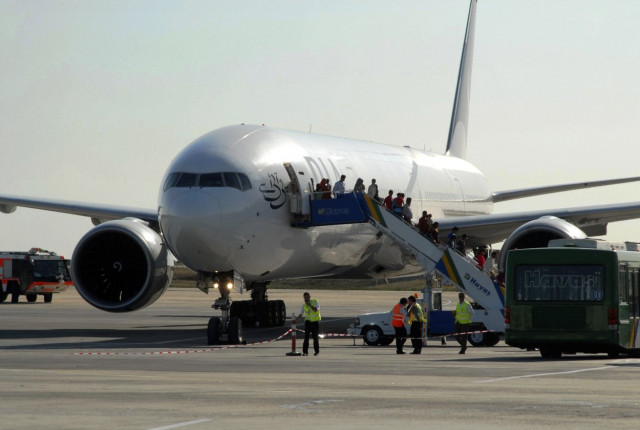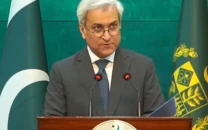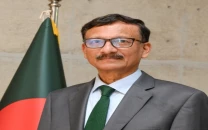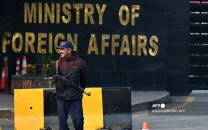Successful takeoffs: How airlines pulled themselves back from the brink
Drawing inspiration from Malaysia, PIA has cut its unprofitable routes.

As per reports, the government plans to separate and place bleeding assets of PIA in a company which will be liquidated in a couple of months along with golden handshake offer to excess employees. PHOTO: REUTERS
“At the start of a turnaround journey, a company is not a democracy. You can’t empower people or ask everybody what they think. You have to be directive, brave enough to set the course. How many generals you need to win a battle, one,” Idrees Jala, former CEO of Malaysia Airlines (MAL) said in an interview to Mckinsey and Company.
The relevance of this statement in case of Pakistan International Airlines (PIA) cannot be overstated. Pakistan’s national flag carrier has gone through the worst in recent years, bleeding profusely as helpless CEOs were replaced in quick succession.
International passenger traffic from Pakistan

It is also relevant because Jala, who is credited with turning around MAL, was in Pakistan and met senior officials of PIA. Managing Director Junaid Yunus even mentioned his name at a recent press conference and said how he inspired him to cut unprofitable routes. But that is just part of the story.
Jala, with no previous background in aviation, was called to rescue MAL when it was months away from bankruptcy. He needed money, just enough to sail through 20 days before a potential default. And he did what in PIA would be inconceivable – he sold the company’s head office for $38 million.
Under his leadership, MAL not only shut the routes on which it incurred losses but also sacked employees working on the routes.
Since Prime Minister Nawaz Sharif gave the go-ahead to privatising PIA by mid-2014, many questions have been raised. People are asking if it is privatisation or a ‘distress sale’? How much employees are to be blamed for the current state of affairs? How will the government establish real worth of the airline?
As per reports, the government plans to separate and place bleeding assets of PIA in a company which will be liquidated in a couple of months along with golden handshake offer to excess employees.
However, there is a catch. It will take past debt on its books and continue to service state-guaranteed loans. No details have been shared about the loans which the government will service.

Debt and liabilities
Until December 2012, the long-term debt of PIA was Rs56 billion, including the remaining cost of nine B-777s the airline leased from 2004 to 2007.
“Lease payments for two B-777s will come to an end by 2016. That means $300 million worth of assets will move to the balance sheet. By 2018, PIA would pay for all the aircraft,” said a senior airline official.
One reason for PIA’s poor financial situation is interest payments in dollars. The more the rupee depreciates, the higher the interest it has to pay.
Smartly enough, PIA paid $30 million in 2012 as remaining instalment of six A310-300 aircraft and acquired them in an early termination of the lease agreement. The airline has already acquired turbo-prop ATRs.
Current liabilities of the airline swelled 59% to Rs166 billion last year as it had to take more loans to pay for daily expenditures and the debt taken in previous years. This is a major problem as revenue falls short of meeting expenses.
Airlines in distress sometimes even sell their assets such as the allocated slots at international airports. India’s Jet Air sold three pairs of its slots at Heathrow Airport for $70 million to UAE’s Etihad Airways.
“There is no one in PIA who wants to think out of the box as they know that in the end the government will come to the rescue. Then what is the point in trying a bit harder?” the official asked.
Pakistan has air services agreements with 45 countries. PIA flies to just a handful of them.
Who will pay?
Civil Aviation Authority (CAA) rules allow foreign investment of up to 49% in Pakistan airlines. The question is why hasn’t anyone invested yet?
“Year-on-year growth in passenger traffic has been at best 3% to 4%. That’s far less than what other countries in the region have recorded,” said a senior CAA official.
After dillydallying for years, the Indian government allowed the same percentage of investment in domestic airlines last year. That immediately attracted foreign interest.
CAA officials say Qatar Airways has shown interest in completely acquiring PIA two times in the last couple of years. “But past governments were too scared of messing with the employees,” said an official.

Another widely quoted turnaround story is that of Japan Airlines (JAL), which filed for bankruptcy in 2010 in the wake of a huge debt burden. The government brought in Kazuo Inamori, who had no background in aviation.
JAL still needed equity injection. The Japanese government set up Enterprise Turnaround Initiative Corporation and pumped $4.4 billion against shares of the airline.
Inamori fired a third of the workforce. And when it became profitable, the government sold shares in one of the largest IPOs ever. The cash raised was returned to the national exchequer.
Published in The Express Tribune, September 30th, 2013.
Like Business on Facebook, follow @TribuneBiz on Twitter to stay informed and join in the conversation.



1724919650-0/Untitled-design-(5)1724919650-0-208x130.webp)















COMMENTS
Comments are moderated and generally will be posted if they are on-topic and not abusive.
For more information, please see our Comments FAQ